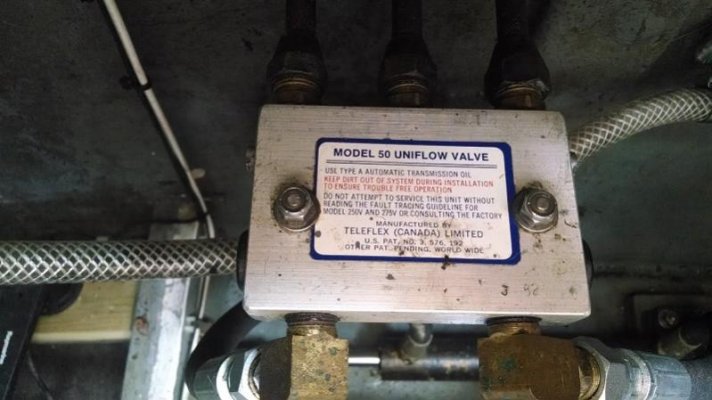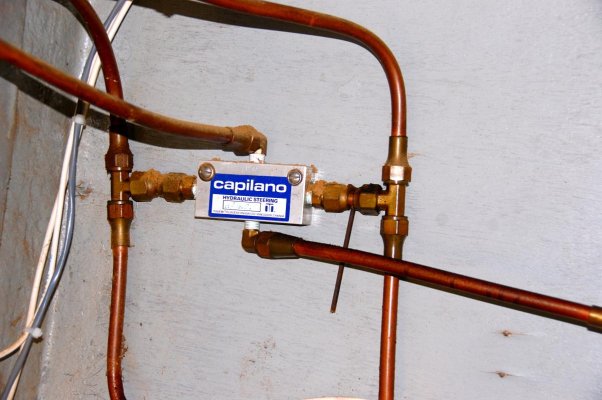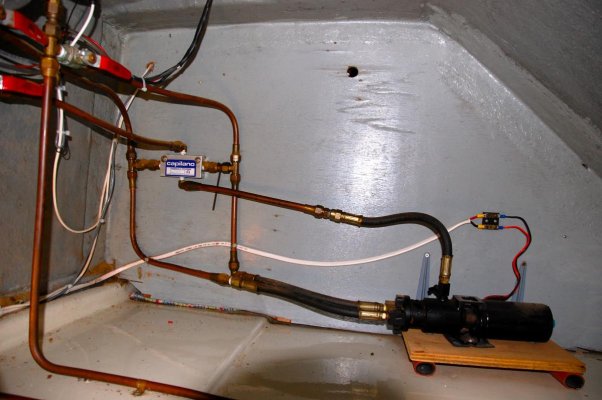Rduval
Veteran Member
- Joined
- May 11, 2014
- Messages
- 94
- Location
- Canada
- Vessel Name
- Bonaventure
- Vessel Make
- Cheer Men PT41 Europa
I have a 1984 Trawler with hydraulic teleflex system. 3 pipes to both helms and a teleflex 50 Uniflow valve.
Here's my problem: Making slow corrections on the wheel makes NO corrections on the rudders. Making quick jerky movements on either helm produces desired rudder movement.
Also, when the autopilot is engaged, when it makes a correction to port, one or both of the wheel move slightly to Stbd and vice-versa.
This leads me to suspect that the Uniflow valve may be the likely culprit and is allowing fluid to leak past the appropriate one-way valves when moved slowly but when the pressure is higher during a fast wheel correction it overcomes the leak-by (my invented term) and actually does something.
Any wise old birds with experience to either confirm or refute my theory would be appreciated. From what I understand these systems are decades obsolete and cannot be replaced other than changing both helms ($$$$$$$$$$)
Here's my problem: Making slow corrections on the wheel makes NO corrections on the rudders. Making quick jerky movements on either helm produces desired rudder movement.
Also, when the autopilot is engaged, when it makes a correction to port, one or both of the wheel move slightly to Stbd and vice-versa.
This leads me to suspect that the Uniflow valve may be the likely culprit and is allowing fluid to leak past the appropriate one-way valves when moved slowly but when the pressure is higher during a fast wheel correction it overcomes the leak-by (my invented term) and actually does something.
Any wise old birds with experience to either confirm or refute my theory would be appreciated. From what I understand these systems are decades obsolete and cannot be replaced other than changing both helms ($$$$$$$$$$)







